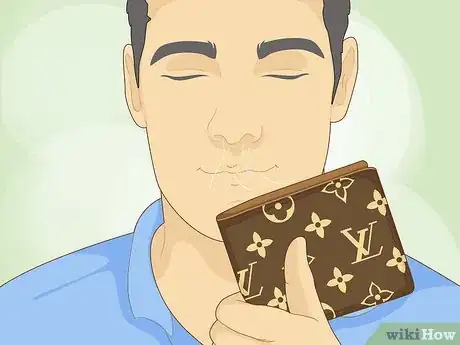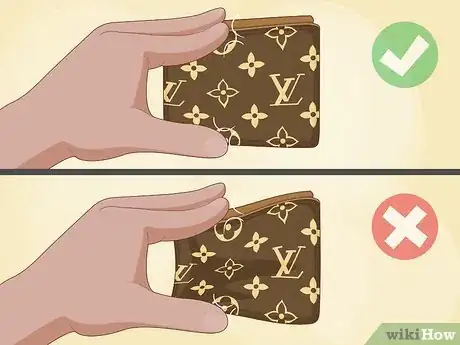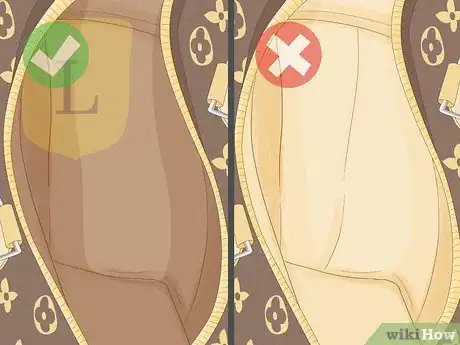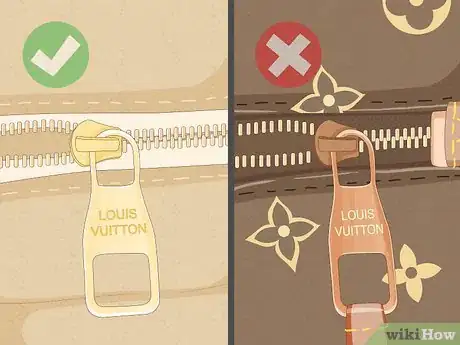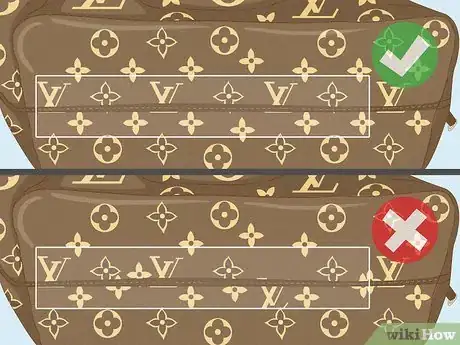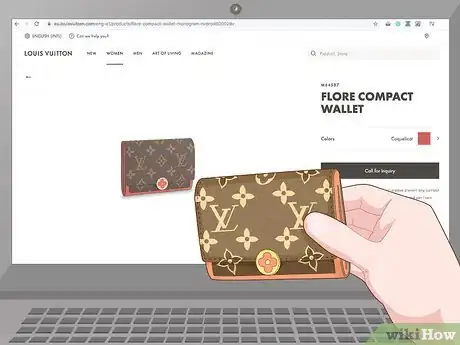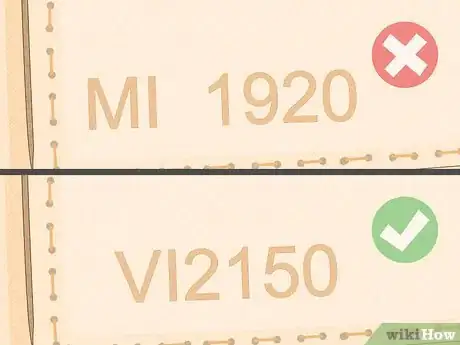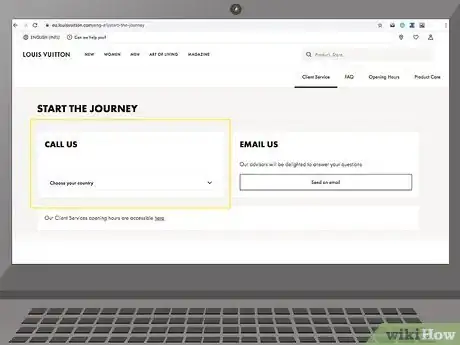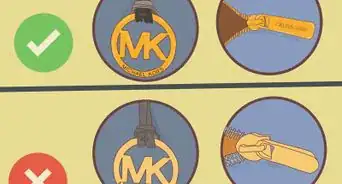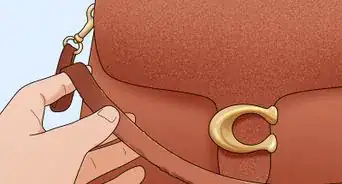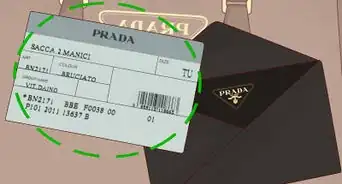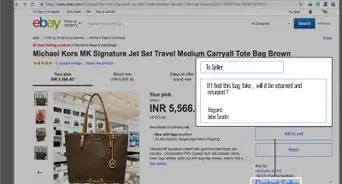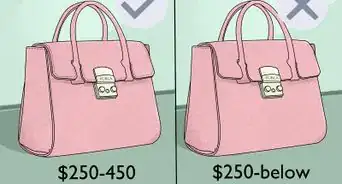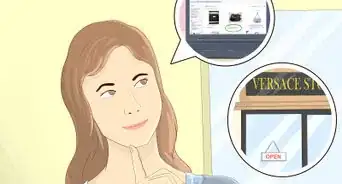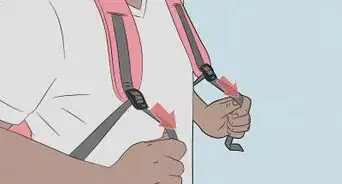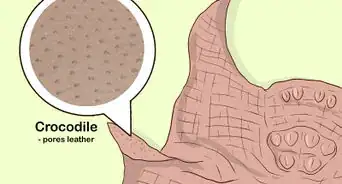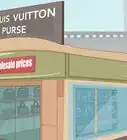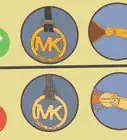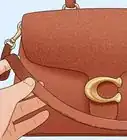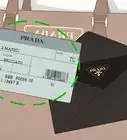This article was co-authored by wikiHow Staff. Our trained team of editors and researchers validate articles for accuracy and comprehensiveness. wikiHow's Content Management Team carefully monitors the work from our editorial staff to ensure that each article is backed by trusted research and meets our high quality standards.
There are 9 references cited in this article, which can be found at the bottom of the page.
This article has been viewed 187,078 times.
Learn more...
Louis Vuitton (LV) is a French luxury fashion company that has been producing high-quality products since the 1850s. Louis Vuitton wallets are known for pristine construction, so it’s natural that you’d want one for yourself. However, LV products are often targets for counterfeiting. If you buy from a licensed LV dealer then you know you’re buying a real product, but what if you buy online or from an independent seller? Luckily, you can look for some telltale signs to spot an authentic Louis Vuitton wallet before you buy it.
Steps
Inspecting the Wallet Quality
-
1Feel and smell the wallet to confirm that it's real leather. LV wallets should be made of real leather, unless the product description says otherwise. The wallet should feel and smell like pure leather. If it smells like chemicals or plastic, then this isn’t an authentic wallet.[1]
- The leather should feel dry, not oily or sticky. This could indicate a synthetic product or damage.
-
2Squeeze the wallet to check for a thick structure. Authentic LV wallets are usually thicker than counterfeits because they’re made of sturdier material. Feel the wallet to make sure it’s thick and feels sturdy. Fakes will feel like plastic and nowhere near as sturdy.[2]
- The structure might not be immediately obvious to you without something to compare the wallet to. Use the structure combined with other indications to spot fakes.
Advertisement -
3Look for flawless and even stitching around the entire wallet. LV products are all held to the highest quality standards. Look at the stitching along the border of the wallet. All of the stitches should be in a perfectly straight line and an even distance from each other. Any inconsistencies or imperfections indicate a counterfeit because LV wouldn’t put out a product that had these mistakes.[3]
- Look closely at the corners. It takes a lot of skill to keep the stitching straight around turns or corners and counterfeiters usually mess up here.
-
4Make sure the interior is as well-made as the exterior. Check inside the wallet on areas that aren’t immediately visible. An authentic LV product will have perfect stitching and sturdy materials everywhere, but a counterfeiter might try to hide imperfections inside the wallet. Some line the interior of wallets with fabric instead of leather, or try to hide poor stitching behind flaps.[4]
-
5Touch the zippers and other hardware to make sure they're quality metal. Counterfeiters often use cheaper materials for the wallet hardware. Sometimes they even use plastic. Hardware on authentic LV products should feel heavy and sturdy, and look shiny. If the hardware looks faded or feels light, then it's probably fake.[5]
- Some LV women's wallets come with chains. Remember to inspect this chain for quality as well.
- LV usually stamps its logo on the hardware as well. Counterfeiters might skip this step, or they might use low-quality stamping methods that product a faded and imprecise logo.
-
6Confirm that the base color doesn’t bleed through any colored designs. LV occasionally releases products with colorful designs like flowers. These designs should look flawless and have vibrant colors. None of the base color should show through the design. Counterfeits usually cheaply stamp the design on, so the colors fade over time. If any of the designs look faded, then this indicates a fake.[6]
- Usually, designs don’t cross over seams. If any of the designs are intersected, this also indicates a fake.
Checking the Logos and Codes
-
1Check the letters and spacing on the Louis Vuitton logo. The LV logo appears on the wallet product stamp, and might also be on the front or back of the wallet cover. This logo is very precise, and many counterfeiters can’t reproduce it correctly. If the logo on a product you’re looking at doesn’t look exactly right, then don’t buy it.[7]
- The “L” in the logo has a very short tail. If it looks like a standard L, then this isn’t correct. The O’s are also very round look larger than the other letters, while the tops of the 2 T’s nearly touch each other. There are some exceptions to this rule for special or limited releases.
- Letters in each word are all close together, but there is a space between both words. Some counterfeits omit this space and make Louis Vuitton look like one word.
- The logo overall looks very crisp and easy to read. If it looks faded, unclear, or uneven, then this is a bad sign.
-
2Compare the wallet to the same model on Louis Vuitton’s website. All of Louis Vuitton’s products are listed on their website. If you have any doubts about what a wallet is supposed to look like, go to https://eu.louisvuitton.com and find the wallet you’re looking at to compare.[8]
- Pay close attention to the logo on this specific product. A counterfeiter might get this small detail wrong.
- With smartphones, looking up details about the wallet online is easy. You can do it while you’re still in the store.
-
3Identify the date code on the inside of the wallet if it has one. In 1987, Louis Vuitton started adding country and date codes to some products. This code may be on a tab inside the wallet or directly stamped onto it. You can look up this code to see if it’s accurate. LV doesn’t have a public key to look up codes, but if you search a code on the internet you’ll find other websites that can interpret the code.[9]
- A date code isn’t the same as a serial number, so they’re not unique to any one product. LV doesn’t put a lot of emphasis on the code in determining a real from a fake product.
- Having or not having a date code doesn’t confirm whether a wallet is real or fake. A real code may have rubbed off, or a counterfeiter may have stamped a correct code onto the wallet. However, if there is a mistake in the code, like if you get an error message in a search tab, then it’s definitely fake.
-
4Look up where this particular wallet was manufactured on LV's website. Since most Louis Vuitton products are made in France, counterfeiters usually slap “Made in France” on all their products automatically. However, LV has workshops in a few different countries. They also occasionally release special lines or collaborates with other companies, and these products might be made elsewhere. Look on the LV website to confirm where a particular line was manufactured. If it was somewhere besides where the stamp says, then this is a fake product.[10]
- LV leather products like wallets are all manufactured in France, Spain, or the US. Some other products are made in Switzerland and Italy.
-
5Contact Louis Vuitton client services if you need any assistance. Louis Vuitton prides itself on producing quality products and doesn’t want consumers to buy fakes. If you’re unsure if a product is authentic, then contact LV directly and ask for help. Their representatives can help you assess the piece and decide if it’s authentic or not.[11]
- You can call or email client services by visiting https://eu.louisvuitton.com/eng-e1/start-the-journey.
- Asking the company about fakes also helps them because they can then report counterfeiters to the correct authorities.
Warnings
- Unless you're buying directly from LV, you should always inspect the wallet in person instead of ordering it online so you can find the telltale counterfeit signs.⧼thumbs_response⧽
- Don’t feel pressured to buy a product if you aren’t sure it’s authentic. Counterfeiters usually rely on making people feel like they’re being rude if they say no.⧼thumbs_response⧽
- If a price seems too good to be true, then it probably is. LV doesn’t mark down their products unless they’re second-hand, so cheap wallets from a third-party seller are likely counterfeits.⧼thumbs_response⧽
References
- ↑ https://www.forbes.com/pictures/efik45ehdfd/how-to-spot-a-fake-louis-vuitton-10-questions-to-ask-2/#4447765539eb
- ↑ https://youtu.be/73jr77TYKac?t=123
- ↑ https://www.forbes.com/pictures/efik45ehdfd/how-to-spot-a-fake-louis-vuitton-10-questions-to-ask-3/#463a3f1511ab
- ↑ https://www.forbes.com/pictures/efik45ehdfd/how-to-spot-a-fake-louis-vuitton-10-questions-to-ask-3/#463a3f1511ab
- ↑ https://www.lollipuff.com/blog/241/easy-louis-vuitton-bag-authentication-guide#comment-start=end
- ↑ https://www.forbes.com/pictures/efik45ehdfd/how-to-spot-a-fake-louis-vuitton-10-questions-to-ask-5/#32093796f795
- ↑ https://www.lollipuff.com/blog/241/easy-louis-vuitton-bag-authentication-guide#comment-start=end
- ↑ https://eu.louisvuitton.com/eng-e1/homepage
- ↑ https://www.lollipuff.com/blog/365/louis-vuitton-date-code-guide
